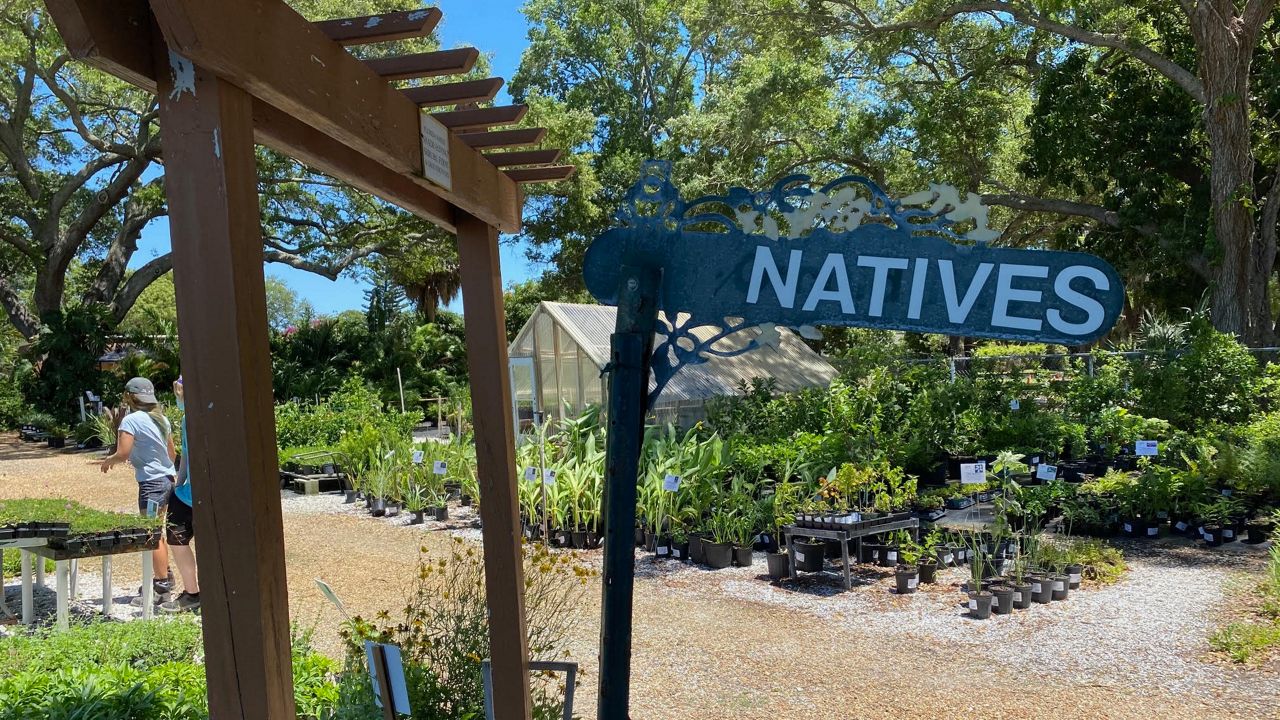LARGO, Fla. — A cool breeze helps cut the sun’s heat as Marquette McManus, production manager for Largo’s Wilcox Nursery & Landscape, runs down the Florida-friendly features of a native plant called bahama cassia.
“It’s butterfly-friendly, it’s very drought tolerant and really likes the sun,” she says, fingering the flowering shrub. “It’s a really easy-to-establish native plant and very good for your yard.”
What You Need To Know
- Trend toward sustainable, Florida-friendly yard landscaping continues to grow
- Tampa Bay offers several resources, from specialist nurseries and landscapers to the University of Florida IFAS extension program
- Native plants require less water, fertilizer and overal care to thrive in their environment
A perfect storm of COVID-inspired gardening, national headlines regarding Las Vegas’s attempts to ban grass lawns, and the impending annual summer fertilizer bans in Hillsborough, Pinellas and Manatee counties has spurred a renewed interest in sustainable home landscaping in the Tampa Bay area.
“I think a lot of people are at home, they’re getting a chance to read the books and they’re getting a chance to see the stuff online,” says McManus. “I think people are definitely getting more educated about it.”
Opened in 1951, Wilcox has gradually become famous for its advocacy of using native and Florida-friendly fauna. For the last two decades, McManus says owner Bruce Turley “has done a great job turning into a native nursery;” around 90% of the business’s offerings are homegrown or perfect for the local climate.

The traditional, healthy grass lawn is still a cherished ideal and ultimate homeowner’s goal in Tampa Bay, but has long been problematic. Sod takes a whole lot of care to properly incorporate into the region’s notoriously difficult, nutrient-lacking soil. Lawns, particularly those with non-native grasses, require irrigation or constant watering, along with chemically-enhanced fertilizers whose ingredients, particularly nitrogen and phosphorous, run off into our waterways and play havoc with the environment, causing algal blooms and worse.
With climate change and water pollution constantly in the news, many are opting to decrease the amount of grass in their yards, replacing areas of sod with hardy, beautiful native plants and ground cover that not only thrive in the sun, but also attract beneficial and beautiful pollinators like native butterflies.
“It’s not just all about native plants, it’s about smart design,” says Jeff Klinkenberg, owner of Floridigenous Landscape. “The overarching theme is, the smaller the sod footprint, the better.”

Locals wanting to learn more about the earth-friendly trend—as well as Sunshine State gardening and landscaping in general—would do well to check out the University of Florida’s Institute of Food and Agricultural Sciences (IFAS) Extension, and its Florida-Friendly Landscaping Program.
“We teach communities, homeowners, landscapers,” says program director Doris Heitzmann. “We’re really focused on the homeowners’ side here, and how to protect water resources.”
The program and classes revolve around a system of nine principles: “Right Plant Right Place;” “Water Efficiently;” “Fertilize Appropriately;” “Mulch;” “Attract Wildlife;” “Manage Yard Pests Responsibly;” “Recycle Yard Waste;” “Reduce Stormwater Runoff;” and “Protect the Waterfront.”
“It’s really the whole big picture of landscape management,” Heitzmann says, “all beginning with the right plant in the right place.”
The IFAS Florida-Friendly Landscaping Program is funded by Tampa Bay Water, the region’s wholesale drinking-water utility, so water management is a key focus of its teachings. Beyond classes and online resources, the program offers such hands-on help as soil testing and water-usage analysis.
Perhaps the most important thing to remember is that the journey to an eco-friendly Florida lawn doesn’t have to go the way of an expensive total landscaping makeover. There are plenty of projects that can be done cheaply or in chapters on the way to a sustainable outdoor environment.
“Stuff like choosing plants that don’t need irrigation, or need minimal irrigation,” says Wilcox’s McManus. “Switching to drought-tolerant wildflowers or long-living perennials is an option. Or for people who really like the look of turf grass or sod, native ground cover is a really good option.”





